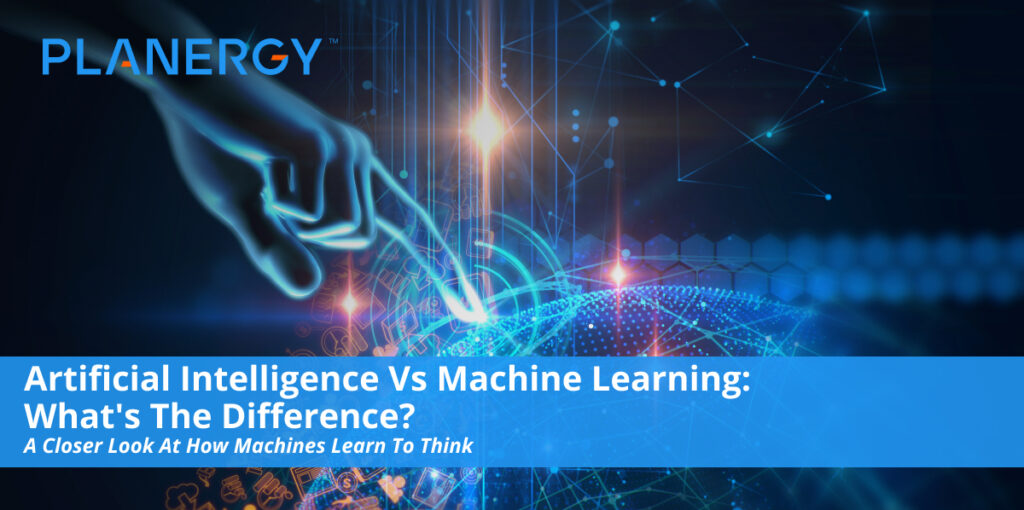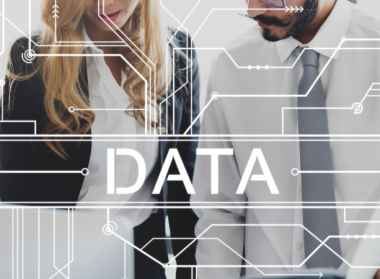Businesses have been searching for smarter, more efficient ways to improve their productivity and profitability since the first enterprising vendor hung out their shingle.
And with digital transformation reshaping the global commercial landscape, businesses of all sizes are eager to tap into the power of technologies like artificial intelligence and machine learning—tools so smart they can, in fact, teach themselves.
To take full advantage of these technological wonders, however, you need to understand how they work, how they’re related to one another, and the different strengths and limitations each brings to the table.
Artificial Intelligence vs Machine Learning
You may have seen or heard them used interchangeably, but artificial intelligence and machine learning are in fact two distinct (albeit related) concepts.
Artificial Intelligence (AI)
Long a staple of science fiction and fantasy, artificial intelligence is the science of designing and building computers and computer programs that emulate human intelligence.
AI covers a very broad field, from advanced process automation in procurement to self-driving cars to cognitive cooking.
These emerging technologies have varying levels of industry penetration and successful execution, but there’s no denying that artificial intelligence is a key component of digital transformation for companies around the globe as Big Data becomes the sea in which all must sink or swim.
Despite its futuristic gleam, real-world AI has been with us since the 1950s, when the US Department of Defense (DoD)—looking to move beyond the rudimentary artificial intelligence systems designed to play chess—took an interest in a project at Dartmouth University designed “to proceed on the basis of the conjecture that every aspect of learning or any other feature of intelligence can in principle be so precisely described that a machine can be made to simulate it.”
That project, led by a maths professor named John McCarthy, would inspire the DoD to develop their own data science projects focused on teaching decision making, problem solving, and other tasks traditionally associated with human intelligence to computers.
The goal was, in fact, intelligent machines—ones designed not just to emulate human beings, but far exceed their capabilities.
Today, artificial intelligence is at the core of important technologies like natural language processing (NLP), artificial neural networks, deep learning and other machine learning models.
AI systems are used by millions of people every day in a variety of ways, including:
- Chatbots
- Smart search (e.g., Google, Bing, etc.)
- Personal virtual assistants (Hello Google, Apple’s Siri, Microsoft’s Cortana, etc.)
- Image recognition
- Speech recognition
- Social media tracking and analysis to identify reputational risks, trending topics, and potential customers
- Real-time monitoring of virtual and real-world environments via The Internet of Things and other Industry 4.0 applications
- Customization as a service (for online profiles, media curation with streaming services, consumer profiles for retailers such as Amazon, Wal-Mart, etc.)
- Fraud detection and prevention in online transactions
- Deep learning-based data analysis used for improved planning, forecasting, and decision making
Machine Learning
It relies on artificial intelligence to tackle the tasks it’s given, but machine learning can best be described as a subset of AI itself.
Machine learning algorithms (ML algorithms) are specialized computer programs designed to collect, explore, and analyze data, and then apply the knowledge they glean to improve future investigations and problem solving.
Machine learning algorithms rely on four key learning models:
Supervised Machine Learning Algorithms
Supervised Machine Learning Algorithms, which uses organized data sets made up of labeled and categorized data points (structured data).
These data sets are known as training datasets, and the algorithms use them to understand and optimize the journey from input to desired output.
Over countless iterations, the algorithms can identify patterns and use them to refine their own output to achieve specific performance, accuracy, and productivity goals (e.g., greater efficiency, fewer errors, higher speed, etc.).
This machine learning method is especially useful when training artificial neural networks (also called neural networks or simply neural nets), which combine input from multiple sources and algorithms to collaborate and solve problems, optimize processes, or predict behaviors.
Unsupervised Learning Algorithms
Unsupervised Learning Algorithms use data sets made up of data points that are both unlabeled and unclassified (unstructured data).
This machine learning method teaches computer programs how to spot patterns and identify hidden opportunities and problems before they’re readily apparent to human beings.
Semi-Supervised Learning Algorithms
Semi-Supervised Learning Algorithms, a blend of both supervised and unsupervised machine learning methods, mixes a small data set of organized (structured) data with a large quantity of uncategorized (unstructured) data.
Combining the two methods is used to push machine learning algorithms to improve both their overall efficiency and efficacy and their ability to develop independent identification and analysis of patterns.
This method is perhaps the closest to the way human beings themselves learn, emphasizing not just raw computational power but a kind of flexibility we might call “improvisation” or “creativity” in a person.
Semi-supervised learning can involve inputs from a variety of data points beyond databases.
Some artificial neural networks are given additional input via computer vision (i.e., allowing the program to receive visual data via cameras, video, images, etc.) and natural language processing (speech recognition, voice search, etc.) to develop their abilities to carry on conversations, respond to visual and audible requests for information or services, or even help diagnose health conditions.
Reinforcement Learning Algorithms
Reinforcement Learning Algorithms are taught using trial and error. Programs learn which tasks have the highest value, resulting in “rewards,” and which have low value, resulting in no reward.
Much of the “grunt work” that accompanies machine learning involves reinforcement learning, as it requires little deviation and is focused on achieving desired outcomes as quickly, efficiently, and accurately as possible.
Note: Deep learning is a subset of machine learning, similar to machine learning’s role as a subset of AI itself.
It is a very specialized application of machine learning technology, connected to neural network applications, and designed to take on more data, more quickly, than standard ML algorithms, and to master unsupervised learning tasks in much more human ways.
To paraphrase an old comparative, while all deep learning is machine learning, not all machine learning is deep learning.
There’s nothing artificial about the power and potential of AI and machine learning in taming Big Data. Companies who understand the ways in which these technologies can help them optimize their competitive performance, optimize process efficiency, and generate value will be at the head of the pack in the quest for success and growth.
Artificial Intelligence and Machine Learning in Procurement
With data taking center stage as an invaluable resource in the modern marketplace, procurement professionals find themselves challenged to redefine their roles and shift away from cost savings and waste avoidance and toward building value and supporting better business process management for the organizations they support.
Along with predictive analytics, artificial intelligence and machine learning have given rise to a transformative paradigm known as cognitive procurement.
This new approach promises to bring unprecedented efficiency, transparency, and value creation to the procurement function by using artificial intelligence tools to eliminate human deficiencies and maximize speed, accuracy, and strategic advantages like never before.
A procurement solution like PLANERGY—cloud based, with native support for machine learning, advanced analytics, and Big Data collection, organization, and management—gives procurement teams access to improvements unavailable to those using legacy applications or pen and paper workflows:
- Total data transparency.
- Low-value, repetitive, and time-consuming tasks like data entry and three-way matching are transferred to AI, eliminating human error and freeing staff to leverage their skills more effectively.
- Advanced process automation tools, with support for contingencies.
- Mobile-friendly collaboration and data access from wherever there’s an Internet connection.
- Iterative and continuous improvement for all your business processes, guided by machine learning.
- Advanced optimization through connection of all your applications to a centralized data environment.
- Audit-friendly, accurate, and complete financial reporting and forecasting.
- Improved decision making and strategic sourcing through real-time access to, and analysis of, all transaction data.
Artificial Intelligence Drives Real and Lasting Change
There’s nothing artificial about the power and potential of AI and machine learning in taming Big Data.
Companies who understand the ways in which these technologies can help them optimize their competitive performance, optimize process efficiency, and generate value will be at the head of the pack in the quest for success and growth.
Will your business be among them?




